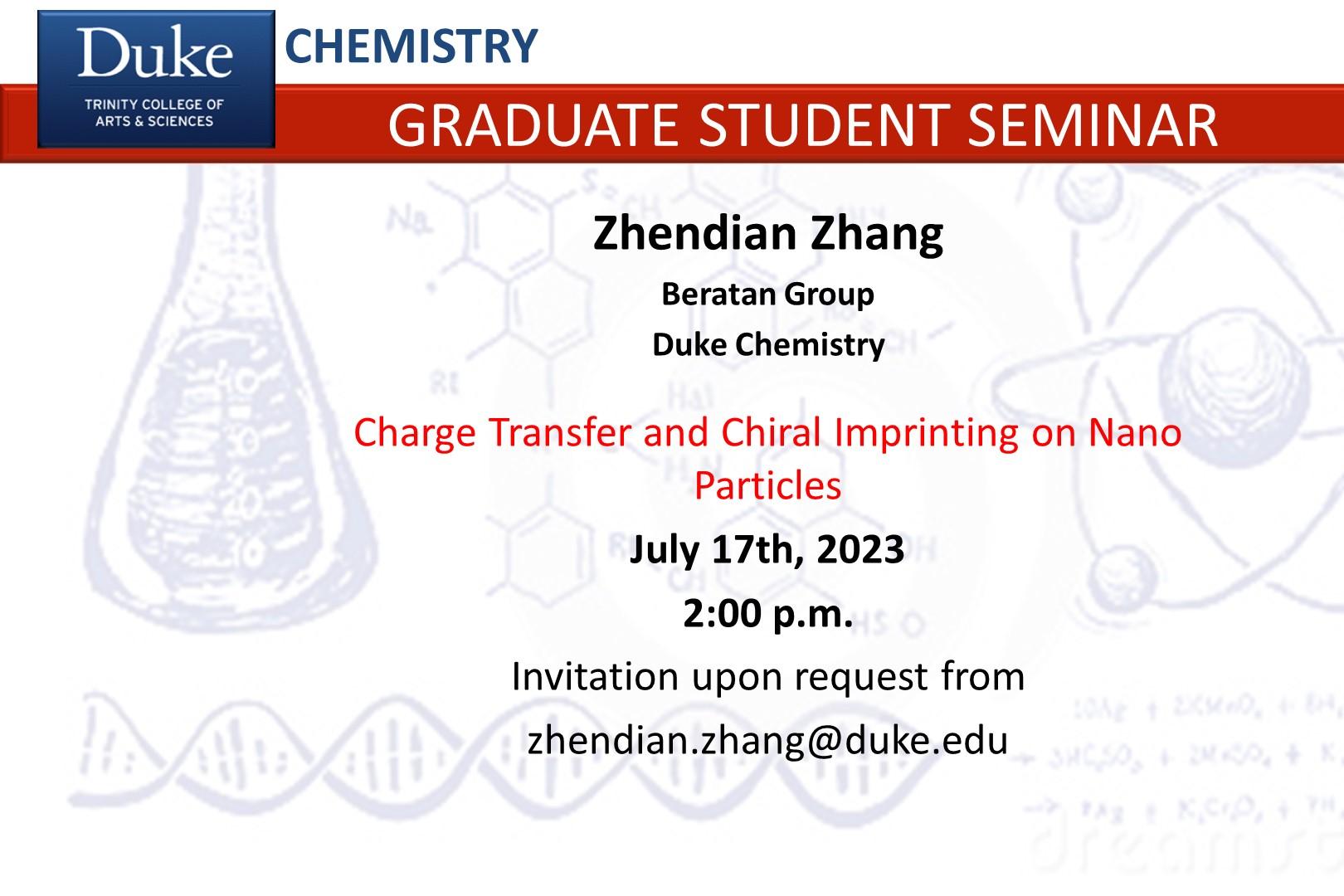Charge Transfer and Chiral Imprinting on Nano Particles

Zhendian Zhang, Ph.D. Candidate
David N. Beratan Ph.D., Advisor
Abstract: We studied quantum dots (QDs) charge transfer problem focusing on two systems: 1) electron transfer (ET) in CdSe QDs facilitated by solvents and linkers, and 2) charge and triplet energy transfer (CT, TET) between CdSe/CdS core/shell QDs and ligand acceptors. We also investigated chiral imprinting on perovskite nanoplatelets and ET dynamics in organic molecules.
Our simulation of ET between CdSe QDs showed that ET coupling declines exponentially with dot distance, with the decay constant influenced by the linker size and the tunneling barrier. When donor and acceptor sizes greatly exceed the linker size, the ET is primarily through-solvent tunneling.
CdSe/CdS core/shell QDs are observed a soft TET rate decay with shell thickness. Our model found that increasing shell thickness boosts the Franck-Condon factor, balancing the exponential decrease of electronic coupling. Our study also showed that the dispersion of shell thickness further reduced the TET rate decay constant.
We applied density functional theory and a charge-perturbed-particle-in-box model to study the chiral imprinting of perovskite nanoplatelets, finding that the imprint's CD signal is affected by the orientation of the chiral ligand. Our model calculations showed that the intensity of the CD signal from the lowest energy exciton transition saturates as the fraction of chiral surface ligands grows.
Finally, we analyzed how light polarization influences ET yield in the coherent limit. Two donor exited states that couple to the acceptor state produce a pathway interference that influences the ET. Using Lindblad equation, the dissipation due to system-environment interaction was introduced to the model. We found that linearly polarized light can produce a substantial yield difference in the donor-acceptor system, unlike circularly polarized light.






